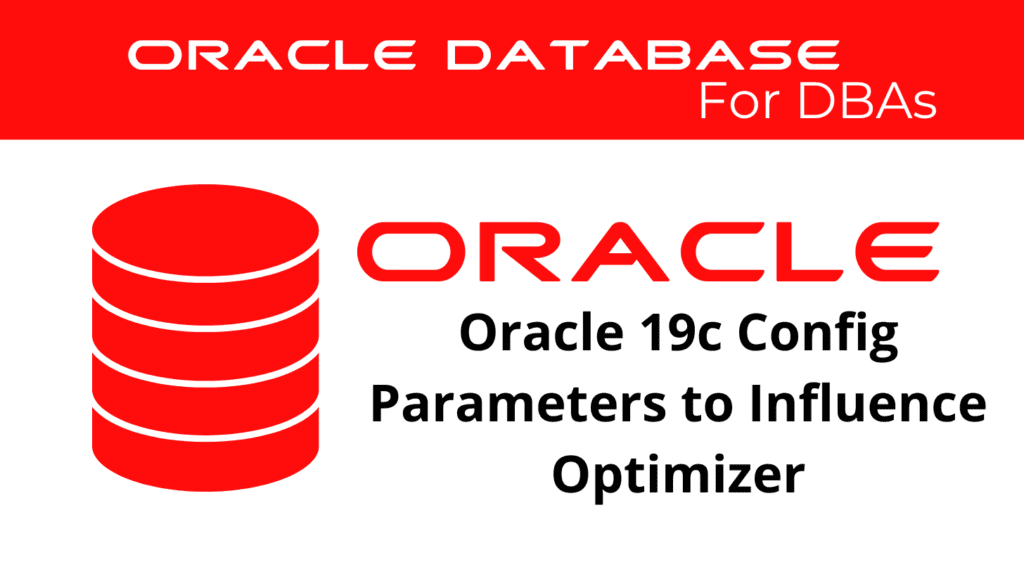
Understanding how to configure parameters to influence the Oracle optimizer and its settings is crucial for database administrators aiming to enhance database performance. In Oracle 19c, the role of optimizer parameters is pivotal in determining the most efficient execution plans. Let’s explore how configuring optimizer parameters affects query performance and their overall influence on the optimizer.
Optimizer Parameter Configuration
Optimizer parameters are essential for the Oracle optimizer as they provide vital information on how to handle query execution. The optimizer uses these parameters to decide the most cost-effective way to execute a query. For instance, parameters like OPTIMIZER_MODE and OPTIMIZER_INDEX_CACHING influence whether to prioritize query response time or resource usage. Accurate configuration of these parameters ensures that the optimizer chooses the best path, thereby improving query performance.
ALTER SYSTEM SET OPTIMIZER_MODE = 'ALL_ROWS';
ALTER SESSION SET OPTIMIZER_INDEX_CACHING = 90;
In this example, the OPTIMIZER_MODE is set to optimize for the best throughput, which is suitable for batch processing. The OPTIMIZER_INDEX_CACHING parameter is adjusted to reflect a high percentage of index blocks in the buffer cache, thus favoring index scans over full table scans.
The Oracle optimizer relies heavily on optimizer settings to evaluate different execution plans. Without properly configured parameters, the optimizer might choose a suboptimal plan, leading to poor performance. Regular updates and adjustments to these settings are necessary to maintain their effectiveness, especially after significant changes in the database workload.
Influence of Parameters on Optimizer
The influence of optimizer parameters on Oracle performance is profound. When you configure parameters correctly, the optimizer makes more informed decisions, leading to faster query execution times. This results in overall improved database performance. Conversely, misconfigured or outdated parameters can cause the optimizer to make poor choices, resulting in slower queries and degraded performance. Therefore, DBAs must prioritize the regular review and adjustment of optimizer settings as part of their routine maintenance activities.
For example, the OPTIMIZER_INDEX_COST_ADJ parameter adjusts the cost of using an index. Setting this parameter too high can cause the optimizer to avoid using indexes even when they would improve performance. Conversely, setting it too low might cause the optimizer to use indexes excessively, which could also degrade performance.
ALTER SYSTEM SET OPTIMIZER_INDEX_COST_ADJ = 50;
In this example, the OPTIMIZER_INDEX_COST_ADJ parameter is set to a value that balances the cost of index usage, ensuring that the optimizer makes more balanced decisions.
📢 You might also like: Oracle 19c Reducing the Cost of SQL Operations (Category: Performance Management and Tuning)
Techniques for Influencing the Optimizer
You can influence the optimizer using several techniques, including SQL profiles, SQL Plan Management, initialization parameters, and hints. Each technique offers unique benefits and can be used depending on the specific requirements of the workload.
Using SQL Profiles
A SQL profile is a database object that contains auxiliary statistics specific to a SQL statement. It helps correct suboptimal optimizer estimates discovered during SQL tuning.
BEGIN
DBMS_SQLTUNE.ACCEPT_SQL_PROFILE(
task_name => 'sql_tuning_task',
name => 'sql_profile_name'
);
END;
In this example, a SQL tuning task recommends a SQL profile, helping the optimizer make better decisions for specific queries.
Using Hints
Hints are directives in SQL statements that influence the optimizer’s behavior. You can use them to control various aspects such as join methods and access paths.
SELECT /*+ INDEX(emp emp_index) */ emp_id, emp_name
FROM employees emp
WHERE emp_dept = 'Sales';
In this example, the INDEX hint forces the optimizer to use the specified index, which can be beneficial when the DBA knows that an index scan will be more efficient than a full table scan.
Managing Optimizer Statistics
Accurate statistics are crucial for the optimizer to make informed decisions. The DBMS_STATS package is used to gather and manage these statistics.
BEGIN
DBMS_STATS.GATHER_TABLE_STATS('HR', 'EMPLOYEES');
END;
This command gathers the latest statistics for the EMPLOYEES table, ensuring that the optimizer has the most current information.
Using SQL Plan Management
SQL Plan Management ensures that the database uses only known or verified execution plans, which helps prevent performance regression.
BEGIN
DBMS_SPM.LOAD_PLANS_FROM_SQLSET(
sqlset_name => 'my_sqlset',
plan_hash_value => '1234567890'
);
END;
In this example, the system loads execution plans from a SQL set into the SQL plan baseline, ensuring the use of only verified plans.
Best Practices for Optimizing Parameters
To ensure the optimizer functions at its best, follow these best practices for managing optimizer parameters:
- Regularly Review and Adjust Parameters: Schedule regular reviews of optimizer settings and adjust them as necessary based on changes in the database workload.
- Monitor and Analyze Performance: Regularly monitor the performance and identify queries that perform poorly. Use tools like AWR (Automatic Workload Repository) reports to identify potential issues related to optimizer settings.
- Use SQL Plan Baselines: Implement SQL plan baselines to ensure consistent query performance. This helps the optimizer use the most efficient execution plan for frequently executed queries.
- Leverage Oracle Features: Utilize Oracle’s automatic tuning features to reduce manual intervention. Features like Automatic SQL Tuning ensure that the optimizer settings remain optimal with minimal manual effort.
By adhering to these practices, you can significantly improve the performance of the Oracle optimizer, leading to better database efficiency.
Conclusion
In conclusion, configuring optimizer parameters plays a critical role in influencing the Oracle optimizer. Properly configured parameters enable the optimizer to choose the most efficient execution plans, thereby enhancing overall database performance. Regular maintenance of these settings and adherence to best practices are essential for optimizing the performance of Oracle databases. By understanding the importance of optimizer parameters and implementing effective management strategies, DBAs can ensure that their databases perform optimally, providing faster query responses and better overall user experience.
See more on Oracle’s website!
Be Oracle Performance Management and Tuning Certified Professional, this world is full of opportunities for qualified DBAs!





